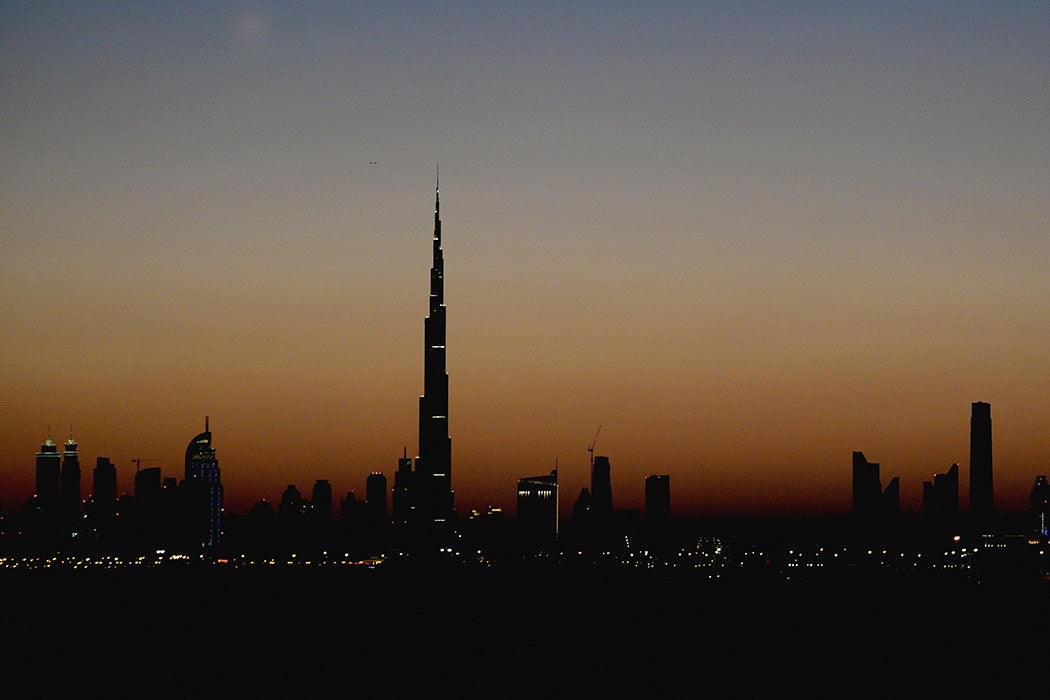World
The Race to Be the Tallest Building in the World – JSTOR Daily

The icon indicates free access to the linked research on JSTOR.
As 1930 approached, New York City seemed flush with money, construction sites, and excitement—despite the recent stock market crash. The Woolworth Building, a Gothic Revival skyscraper designed to celebrate the success of Woolworth “Five-and-Dime” stores, had stood as the tallest building in the world since 1913. But that was about to change.
An unofficial competition had broken out between former business partners William Van Alen and H. Craig Severance, both designing skyscrapers they hoped would be the tallest in the world. Severance kept adding floors to the Manhattan Bank Building (now 40 Wall Street) until he was sure that its height would exceed what was proposed in Van Alen’s design for the Chrysler Building. However, Van Alen had a surprise. To Severance’s dismay, he added a 125-foot-long spire to his design, secretly constructed within the Chrysler Building. Once the spire was hoisted to the top of the building, the Chrysler towered over the Manhattan Bank Building. Van Alen had bested his former partner and earned the title he desired for his skyscraper.
Yet, none of this mattered when the Empire State Building opened in 1931—it was taller than both the Chrysler and the Manhattan Bank Building, taking the title of the world’s tallest building. And it would stay that way for nearly forty years.
Today, the Burj Khalifa in Dubai is the world’s tallest skyscraper, swiping the title from Taipei 101, which had taken it from the Petronas Towers, and so on. Jeddah Tower, under construction in Jeddah, Saudi Arabia, is the newest project vying for this prestigious title. If completed as planned, it will be over 500 feet (approximately fifty stories) taller than the Burj Khalifa.
So why are we still interested in the world’s tallest building? Why do developers and architects still compete for this claim?
Philosopher and business ethics scholar Christopher Michaelson explores the role and implications of building the world’s tallest skyscraper, looking at both the economic and cultural reasons a country or corporation may want to take on such a project. He writes that as a building type, “the skyscraper stands as a particular and compelling symbol of contemporary power and values,” particularly because “its technological possibility dates back only as far as the dawn of modern industrialization.” Furthermore, his research shows that constructing the world’s tallest building tends to be an aspirational pursuit in countries wishing to project a level of economic success that they have yet to achieve.
The skyscraper is just the latest building type to allow humans to build bigger and better. Throughout human history, we have built tall structures to signify what’s important to us. The Great Pyramids of Giza soar above the desert to illustrate the power and importance of the pharaohs buried there. Large earthworks in Cahokia raised the homes of chiefs and other elites high above those of everyday citizens, visually reinforcing the societal hierarchies. In medieval Europe, Romanesque and Gothic cathedral towers proclaimed the power of the Church by dwarfing other structures. And as the global economy has become increasingly industrialized, should we be surprised that our tallest buildings are now skyscrapers?
The drive to build tall even inspired Frank Lloyd Wright. Better known for Prairie School single-family homes and the curves of the Solomon R. Guggenheim Museum, Wright designed a mile high skyscraper that he called The Mile-High Illinois, or simply The Illinois. Unveiling it at a press conference in 1956, Wright remarked that the Empire State Building (still the world’s tallest building at that time) would be overshadowed by his design. Wright included the design for The Illinois in A Testament (1957), optimistically describing elevators supported by “atomic power” that would keep vertical traffic moving at an ideal pace. If the technology to build The Illinois had existed at that time, it may still be the tallest structure ever built. With 528 stories and coming in at “one mile high from grade to top floor,” it would be almost twice the height of the Burj Khalifa and still quite taller than the proposed tower in Jeddah.
As we await the completion of the Jeddah Tower—and the next tallest skyscraper after that—the drive to build higher and higher will continually alter our view of the urban landscape. The average of what is “tall” changes as the tallest stretches ever further heavenward. As architectural historian Rosemarie Haag Bletter reflects, “Yesterday’s skyscrapers become today’s smaller commercial buildings, as the eye measures height in relation to the upwardly mobile skyline.” What made people look up in awe in the early twentieth century is just a normal skyscraper in the twenty-first.
Support JSTOR Daily! Join our membership program on Patreon today.

Resources
JSTOR is a digital library for scholars, researchers, and students. JSTOR Daily readers can access the original research behind our articles for free on JSTOR.
By: Christopher Michaelson
CTBUH Journal, No. 4 (2014), pp. 20–27
Council on Tall Buildings and Urban Habitat
By: Sibyl Moholy-Nagy
College Art Journal, Vol. 18, No. 4 (Summer 1959), pp. 319–329
CAA
By: Rosemarie Haag Bletter
Assemblage, No. 2 (February 1987), pp. 110–117
The MIT Press
By: ANDREW J. EKEN
Scientific American, Vol. 144, No. 5 (May 1931), pp. 318–320
Scientific American, a division of Nature America, Inc.
By: F. D. McHUGH
Scientific American, Vol. 142, No. 4 (April 1930), pp. 265–268
Scientific American, a division of Nature America, Inc.
By: Madeleine Ruthven
Poetry, Vol. 50, No. 2 (May, 1937), p. 77
Poetry Foundation
By: Eugene Henry Klaber
The Journal of Land & Public Utility Economics, Vol. 6, No. 4 (November 1930), pp. 354–358
University of Wisconsin Press
By: Ashlie Sandoval
MELUS, Vol. 44, No. 4 (WINTER 2019), pp. 226–228
Oxford University Press on behalf of Society for the Study of the Multi-Ethnic Literature of the United States (MELUS)
CTBUH Journal, No. 2 (2018), pp. 48–49
Council on Tall Buildings and Urban Habitat
CTBUH Journal, No. 1, Special Issue: Robotics in Tall Building Construction (2021), pp. 48–49
Council on Tall Buildings and Urban Habitat










